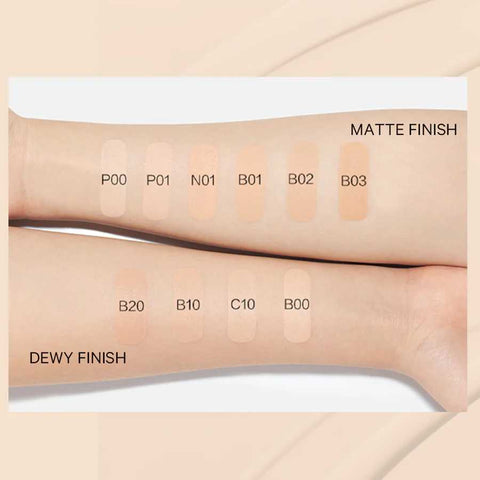Check Here If You Are Looking for The Best Primer for Water Based Foundation
Are you trying to find the best primer for water based foundation? I think you'd agree that if you want to look your best, a decent makeup primer is essential. In particular, if you want to wear makeup every day, this is true. But many makeup trends make it simple to fall victim to them. or using various makeup items. It can therefore become very difficult to decide which makeup item to use at times.
Differences between silicon and water-based primer
A water-based primer is unquestionably the way to go if someone has overall hydration difficulties or simply wants their makeup to feel nicer on their face. Since these solutions are primarily composed of water, experts advise searching for formulations that contain moisturizing elements like fatty acids, jojoba oil, or hyaluronic acid.
When you utilize nourishing ingredients, your makeup won't sink in and fade throughout the day and will stay looking freshly done because it doesn't evaporate as quickly as a moisturizer with a water basis does.
Water-based primers are often safe to use on all skin types, unlike silicone-based products that can irritate, clog your pores, and cause breakouts. Water-based products allow for a really fluid application on the skin and are typically acceptable for sensitive skin because the first or second ingredient is water.
Because they are so adaptable, water-based primers can be applied over any kind of foundation without the risk of flaking or pilling. In contrast to a silicon-based formula, you can also apply nearly anything on top of a water-based primer if the formula is appropriate. Because the formulations weren't made to cooperate, if you use a silicone-based product and then apply a water-based foundation on top of it, they will clash.
Differences between oil and water-based primer
An oil-based primer is one whose base is made of oil. Oil-based paint can be used in conjunction with this primer. Stains and tannins are better sealed by using oil-based primer. Therefore, an oil-based primer is great if you have a bad smoke stain or smell that you'd like to disguise.
A primer that is water-based is simpler to clean up. A water base indicates that water can be used to clean the primer. There is no longer a requirement for customized solutions to be on hand. Primers with a water base often dry more quickly than primers with an oil base. Nevertheless, depending on the brand and type, this may change.
How to choose the best primer for water based foundation
Use this facial product if you want to appear your best. The extra layer that primers add between your skin and any potential makeup you wear helps to prepare your skin. Yes, if you'd rather, you can skip this step. However, wearing a primer might help your foundation and cosmetics stay on your skin longer. Your skin will have a flawless appearance thanks to your foundation's improved smoothness. Additionally, by keeping your makeup from smudging or melting on your face, wearing a primer can keep it in place.
Use the same sort of makeup and primer everywhere, according to this straightforward rule of thumb. Consequently, you want to utilize a silicone-based primer in addition to your silicone-based foundation. The same is true of water-based goods; so, the best primer for water based foundation is one with a water-based formula.
So let's go back to our advice on selecting a primer kind. To fill wrinkles and fine lines on your face, use silicone-based primers. But stay away from them if you frequently break out with acne because these primers might clog your pores. In contrast, a water-based makeup primer is lightweight and suitable for almost all skin types, including oily and acne-prone skin.
How to use a water-based primer
1. Prepare your face – like oil-based primer, make sure your surface is prepared. Sand the surface as flat as you can while scraping off any remaining paint.
2. Stir the primer – some people believe that stirring primer is unnecessary. That is not the situation. stir it thoroughly, just as you would a can of paint. Depending on the number of coats you need to apply and the texture of the surface, you may need to thin the primer with water.
3. Apply the primer – put the primer on your surface with a brush or a roller. Do not merely slap it on. If anything, you should exercise the same caution you would while applying a final coat of paint.
4. Apply another coat – apply multiple thin coats of primer if your surface is rough or if you have a lot of stains.





















